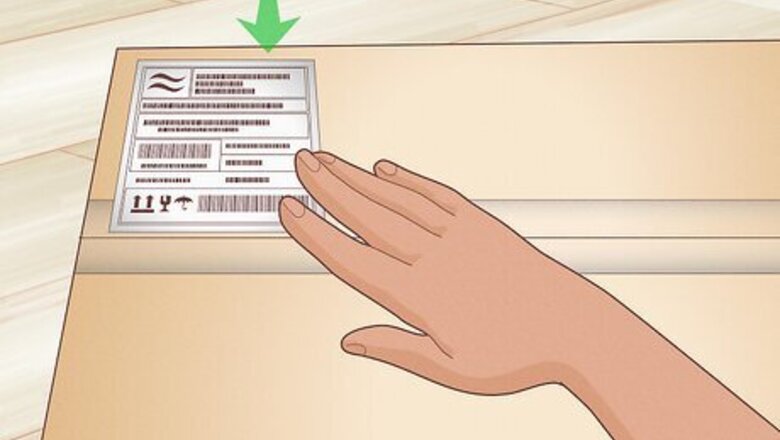
views
How to Attach a Shipping Label

Apply your shipping label to the top of the box. If the top of the box is too small to hold the whole label, place the label on the side. Just keep in mind that if you put the label on the side of the box, a handler may hold the box with that side up, since it's human nature to position a package label side-up. (That said, know that placing the label on top of the box doesn't mean it'll stay that way the whole trip.) If the package is too small to put the entire label on one side, wrap it over a corner—but make sure the barcode fits on one flat side. It might be tempting to place a label on multiple sides of the box, but resist that impulse. You only need one label, on the top of the box.

If you're using a paper label, cover it with clear packing tape. Use transparent packing tape—not that cloudy stuff, but the shiny tape that you can see through—to protect it in case it gets damp or wet. If a paper label is not taped over, it could get destroyed. Avoid painter's tape and masking tape—the label will peel right off. Regular office tape, like Scotch tape, will work in a pinch, but you're going to need a ton of it. When in doubt, bring it to the shipping depot and have them tape it for you. It'll cost a few extra dollars, but it's worth it because you know it'll be done right.
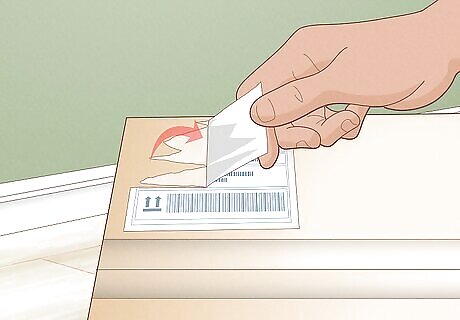
If you're reusing a box, remove or cover old labels. We like recycled boxes. They're greener and they're thrifty. But before shipping something in a used box, be sure to thoroughly scratch out any old labels, peel them off, or cover them up with a new label. You don't want a duplicate label on there because it could cause your package to be missorted, or the wrong barcode could be scanned. Pro tip: Remember that boxes lose about 40% of their strength the second time they're shipped. So if you're shipping something heavy or something very important, you might want to consider using a new box.
Pro Tips for Attaching a Shipping Label to a Box
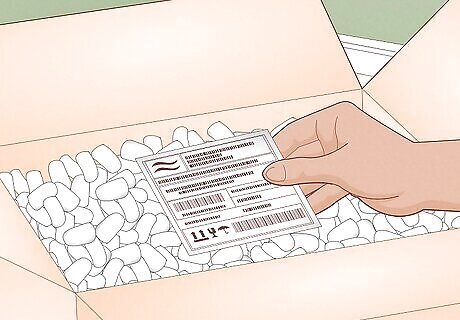
Place a copy of your shipping label inside the box. This isn't required, but we recommend it, just in case the label falls off. It's easy enough to print off two copies of your shipping label and just stick one inside the box, and it'll save you a potential headache (especially if you're shipping something valuable or one-of-a-kind!).
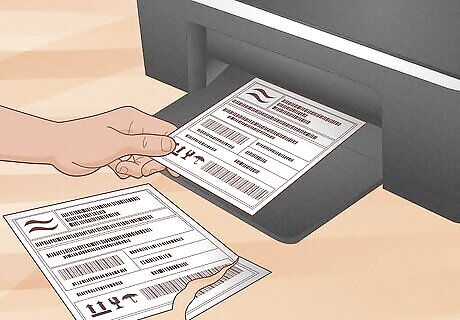
Reprint the shipping label if you tear the barcode. If you accidentally rip the barcode, it might be tempting to try to piece it together again, like puzzle pieces. But it probably won't scan properly after it's torn, no matter how good it looks after you piece it back together! To be safe, just reprint the label. The barcode is the most important thing on the label. Everything is encoded in the barcode. As soon as the package is picked up, it's scanned, and then the whole sorting system is automatic. People don't actually read the "from" or the "to" until the final driver is putting the package on that porch.
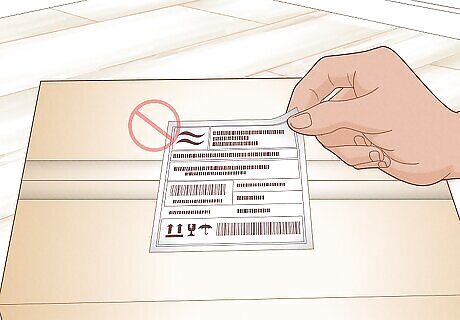
Avoid placing the label over a seam, if possible. We've seen many guests try to put the label over the seam—perhaps because they think that'll help keep the box closed, or they want it centered. But it's important to try to place the label fully on one flap or the other. Why? If the box splits open, it could damage the label, and if the barcodes or the address are torn, the package won't get to where it's going. Of course, this is assuming your box is large enough that you can fit the label on one flap. If your box is too small, you might not have that option.
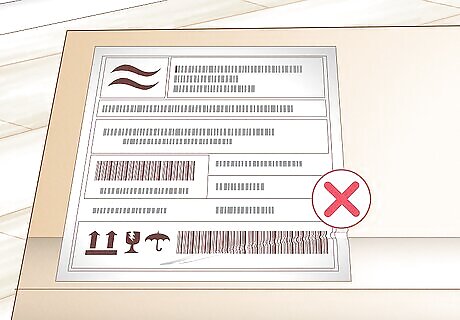
Try not to fold or crease your label. Occasionally, a guest will apply a label and it won't lie completely flat. It happens to the best of us—but some people, rather than peeling back the label and flattening it out, will just rub over the crease. This can make it hard for the scanner to read your label, so do your best to lay the label flat on your package.
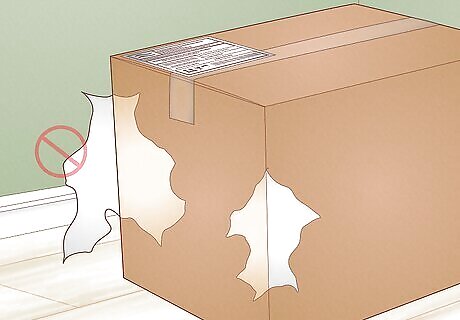
Avoid wrapping your box in paper. It used to be somewhat common for people to wrap their packages in brown paper or even wrapping paper, but nowadays, it's best to avoid it. Why? It's likely to get caught in the conveyor belt, jam the sorting equipment, or rip off. It'll also incur an additional handling fee, which can be anywhere from $25 to $50.
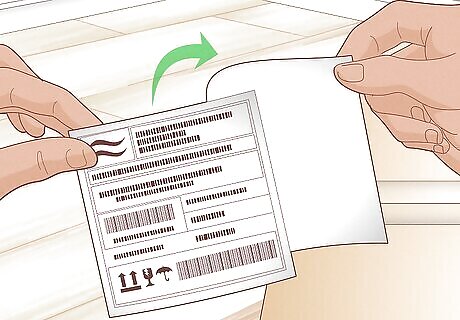
If you're using an adhesive label, peel the whole back off the label. We recommend self-adhesive or thermal labels over paper labels because they're often water-resistant and/or waterproof. Some home printing self-stick label stock is not water-resistant, but professionally printed sticky labels are typically water-resistant, if not waterproof. Just keep in mind that there are some boxes that don't take self-stick labels very well, like wax-coated boxes. Or if you're putting a label on an oddly-shaped item, like a spare tire, and shipping that tire as it is, then the label is not going to stick by itself; you'll need to just wrap that tape around like a belt to secure the label. Don't lotion your hands right before you apply a self-stick label because it'll make the label not as sticky! What's the difference between a self-adhesive label and a thermal label? A thermal label basically is a sticky label. They're both water-resistant. They're printed. They usually come on a roll, not a sheet. A thermal label is heat-sensitive and printed like the receipt paper at the grocery store.

Avoid relying on "fragile" or "this side up" labels. We call these types of labels "stage makeup" because they look great, but as far as the conveyor belts are concerned, it doesn't matter what label is attached—the system is going to treat all packages the same. It doesn't hurt to include these types of labels—any human who handles your box will likely appreciate them and respect them. But don't count on a machine respecting the labels you apply. Note: If you have anything inside your package that is combustible, liquid, under pressure, caustic, or atomic, bring it directly to the shipping center. The employee will have the proper HAZMAT training and permissions to accept such a package and make sure it's labeled properly.
How to Hand-Write a Shipping Label
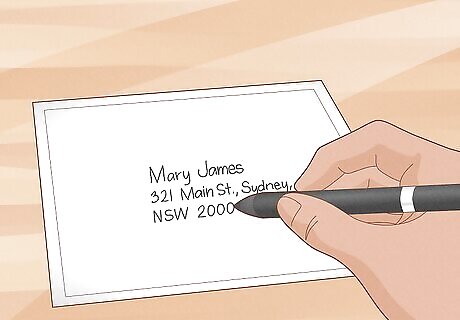
Write the receiver's name and address in the center of the label. Be sure to include the recipient's name—it might be considered a security risk if the package has no name attached. Don't forget the postal code (or ZIP code)—it’s the most important piece of information because that gets it to the destination delivery facility. Believe it or not, people forget to include them every now and then. Beyond the postal code, the rest of the label isn't even going to factor in until the last mile. Print the label to its actual size. Don't select "fit to page" or "full page." When you do this, the label becomes too big to scan and/or too big for the box. If you set the label to "actual size" when you print, it will probably be four-by-six inches, which is the standard size for a shipping label.
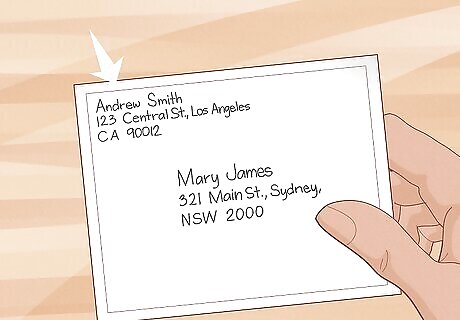
Print the sender’s name and address in the top left corner. Packages typically need the sender's information for security purposes. A package with no clear origin is viewed as a security risk. That’s it—"From" and "To" are the only information you need to generate a shipping label!
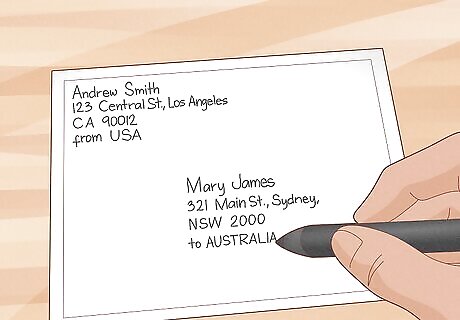
If you're shipping internationally, add the sender's and recipient's countries and phone numbers. It should say "from USA" under your address and "to [receiver's country]" under the recipient's address. This is probably the only time we're ever going to tell someone to use all caps, because indicating the countries of origin and destination is just that important. You're also required to include the recipient's phone number under their name.
How to Apply an International Shipping Label

If shipping internationally, we recommend seeking help from a professional. Exactly how to apply a shipping label and customs documents to an international package will depend on the nature of the shipment—who it's to, who it's from, what country it's going to, and what carrier you're using. Because it can get so complicated, we highly recommend taking your package to the shipping facility and getting assistance from an employee.
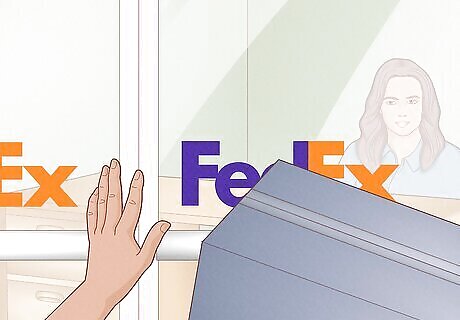
Ship via a commercial carrier if you can. There's no guarantee when it comes to USPS because once the package leaves the country, there's often no tracking information available. When you ship through FedEx, UPS, DHL (soon to be Maersk shipping), or another commercial carrier, the package stays in their possession or in their approved agents' possession the entire time, so you can track its progress to its destination. Yes, sometimes shipping with a commercial carrier can be a little pricier, but don't let that deter you—we guarantee it's going to cost you a lot more if the package doesn't arrive where it's supposed to because you relied on USPS!
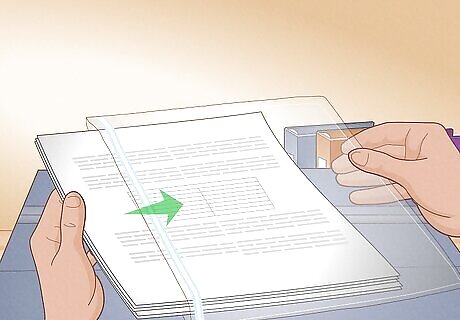
Pack all necessary documents in a clear plastic pouch. When shipping internationally, you'll need a number of different documents to ensure your package gets where it needs to go. Each carrier has its own clear plastic pouches for you to fold the documents into and send with your package, but some people like to be creative and use Ziploc bags and make their own. There are rules on how many copies you need of each document, depending on the carrier and the country. But generally speaking, here's what you'll need to include: Archive document (basically a duplicate shipping label) Proforma or commercial invoice Bill of lading Air waybill Certificate of origin Export packing list Export declaration Customs declaration Import/export licenses Insurance certificate Shipper’s letter of instructions Letter of credit Dangerous goods declaration Consular invoice Harmonized system code (if needed)
How to Pack a Box for Shipment
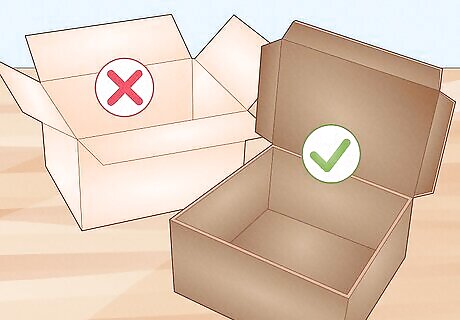
Use a sturdy box—not a moving box. Moving boxes are designed for…well, moving—not for shipping. Moving boxes are just too thin: in order to ensure your package can withstand possibly being dropped and squished, you'll need a sturdy shipping box. You probably need a box that is at least 6x6x6 inches. That size of box will typically fit any shipping label—plus, if your box is any smaller, it could get lost in the mail. If your box is smaller than 6x6x6, repack it in a bigger box or a bubble mailer, and then attach the label to that. If you're considering using an old liquor box to ship a package, think again—shipping companies will assume that whatever is marked on the box you're shipping is what's contained in the box, and won't let you ship a package that seems to contain alcohol.
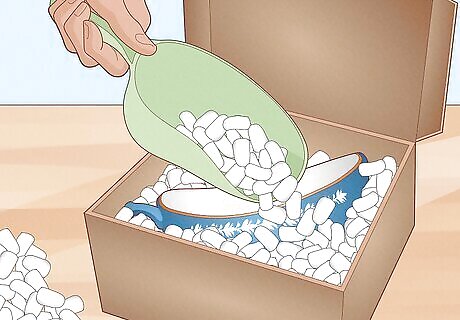
Fill the box to keep it sturdy and protect your item. This is the most important thing. Don't ship a half-empty box because it's going to cave in. After you've wrapped up your item as needed to protect it while it travels, fill in the rest of the box with loose fill. This can be loose paper, plastic, or expanded polystyrene. We'd rather avoid using plastic and expanded polystyrene (the most popular brand name is Styrofoam), but keep in mind that because paper is so fragile, if your item gets damaged en route, the insurance claim will be denied if it was packed with paper. The general rule for fragile items is to add at least two inches of cushioning all the way around the item, minimum. If it's super delicate, you're going to want more, or you're going to want to double-box it: put the first box into a larger box with padding between the two. That will help protect your package.
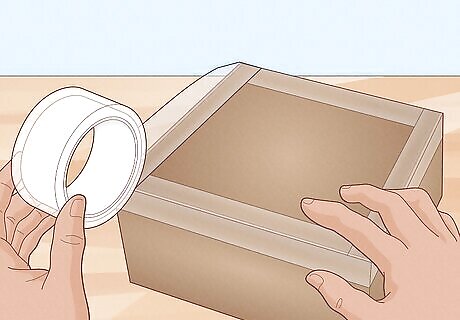
Use packing tape to secure your box. Avoid duct tape, because it's designed to rip on a seam, meaning your box will split right open. Paper tape is similar. We'd recommend investing in a roll of packing tape—even if you don't use it that often, when you need to stick on a shipping label or seal a package, you'll need packing tape. When sealing your box, use what we call the H method: fold down the flaps so that they meet in the middle, then run your tape along the seam where they touch. Then, run your tape along the outer seams to form an H with your tape. This method will keep your package from getting caught on a conveyor belt and tearing open. Avoid folding the flaps on top of your box over and under each other in that crisscross pinwheel thing. It's just not secure enough. If you don't have tape, go to a locally owned shipping center like Island Ship Center or find one through the Association of Mail & Business Centers' directory. There's a directory of independent shipping stores that are members of that national association, so you know they're reputable. They will all tape it for you, or you can buy packing tape from them.
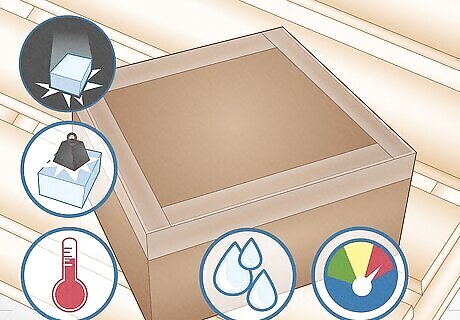
Ensure your box can withstand the five basic environmental hazards. If your package is prepared for a possible encounter with these basic environmental risks, it's good to go. If any of the described scenarios make you uneasy, your box is probably not packed well enough! The five basic environmental hazards include: Shock: If you dropped your box off of a countertop, would its contents survive? Keep in mind that the average shipment will drop about four feet regularly during transit. Compression: If something heavy falls on your package, will it be OK? Temperature: If you're shipping something that requires a stable temperature, insulate your package properly. For example, if you're shipping chocolates to Texas in the summer, they're going to be sitting in a hundred-degree truck, and they're going to melt. Humidity: If you're shipping from a very humid environment or to a very humid environment, the level of moisture in the air could affect the contents of your package, such as electronics. Air pressure: If your package is traveling by air, it's going to be in the belly of a plane that is non-pressurized. So if you're shipping something in a compressor (like hairspray), it's going to pop. That's why compressed things are only allowed to be shipped by ground.
FAQs about Shipping Labels
Can you hand-write a label? You can if you're going to the post office—there are still some post offices that will take a handwritten address label and then put a printable postage label on the package. At a commercial counter, we have to reprint the label because if we use handwritten postage on anything larger than a large envelope, it's considered what they call "target mail," which means it's suspicious and it's going to be investigated. Letters with a stamp—like a greeting card—are the exception. The only way to avoid a package being labeled "suspicious" is to send the package through a postal counter. That being said, if you want to be extra-safe, you could attach an adhesive or paper label and then hand-write your shipping info on the package, too, just in case your label falls off.
Do you need a special printer to print labels at home? No, you don't need a special printer. That said, if you're printing a label at home, make sure that you have good ink or toner in your printer. We see a lot of home-printed labels that are faded, and the barcode doesn't scan properly. If your label is faded or if the barcode is inverted, it means that you don't have enough ink. The barcode shouldn't have missing lines running through it, and if it does, it won’t scan properly.
What if your box is too small for your label? A 6x6x6 box will generally fit any shipping label. If your box is smaller than that, not only will the label not fit, but your box is probably going to get lost in the mail! If your package is too tiny, repack it in a bubble mailer or a bigger box, and then put the label on that.
Can a shipping label be too small? A standard shipping label is four inches for all the major carriers. It can be a little bigger or a little smaller, but if it's too big or too small, you run the risk of the barcode not scanning. The closest you can get to four by six inches is good—just make sure the address and the barcodes are legible. Do not shrink your shipping label to fit a tiny package. If the label is too small, the barcode won’t scan.
Can you use a FedEx label when shipping with UPS, and vice versa? No. Don't use FedEx labels on a UPS box, or vice versa. People do that all the time, but it's actually against the contracts of these shipping companies.
Are shipping rules the same for USPS, FedEx, and UPS? When it comes to commercial carriers, yes, pretty much. The commercial carriers (like FedEx or UPS) are like Coke and Pepsi: they're in constant competition, and their standards are very similar. The postal service is much more fluid regarding what they accept because they are not consistent with their rules: every little post office is its own little universe. However, this means shipping via the postal service is a little riskier, because they don't have nearly the claims payment rate or guarantees that the commercial carriers have.

















Comments
0 comment